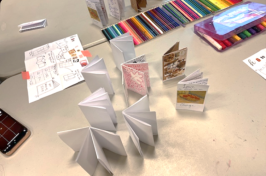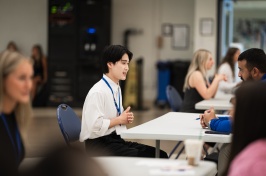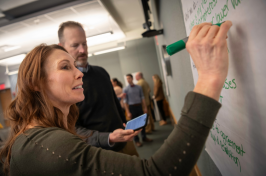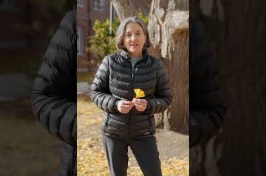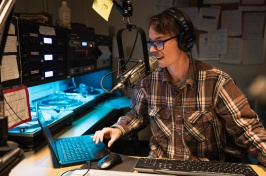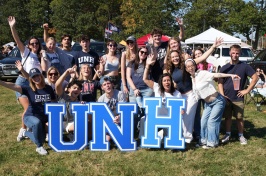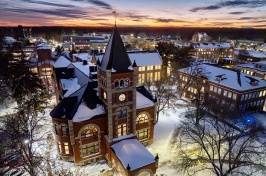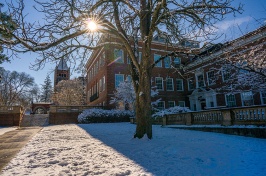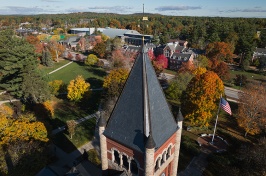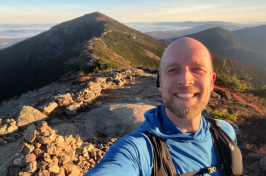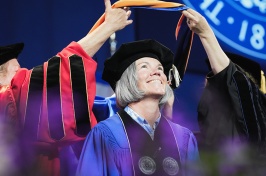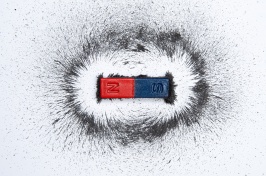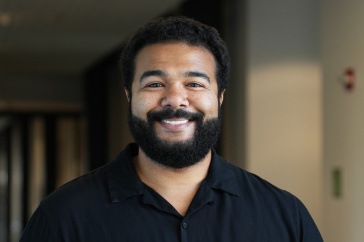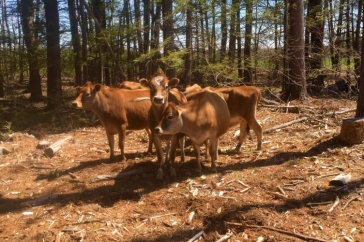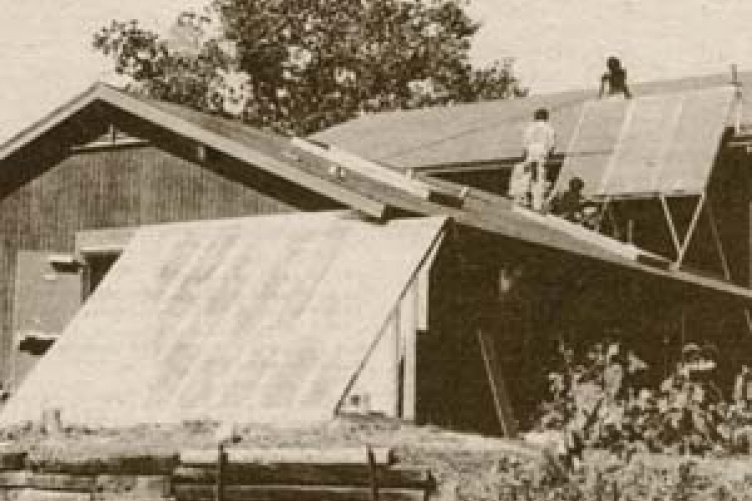
CATCHING SOME RAYS: In a 1980 photo from The New Hampshire, students adjust solar panels on the roof of Woodruff House.
Long before UNH had a Sustainability Academy, there were students and faculty on campus who rolled up their sleeves to show their concern for the environment.
In 1974, the Thompson School and student housing began a joint project that from today's perspective looks tailor made for the Woodstock generation. At a farm off campus named Highland House, students lived and worked on the premises while attending school. In an effort to make the farm completely self-sustainable, they raised beef and grew vegetables, selling the surplus; cut cordwood; made maple syrup and did all their own cooking and baking. On the grounds they maintained a nursery, a Christmas tree farm and an orchard.
Two years later, Woodruff House—UNH's mini-dorm devoted to the environment—opened, and soon its 50 resident students were making improvements, such as solar panels and a greenhouse on the south side of the building. Students experimented with composting in the greenhouse and tried different methods of insulation like weather stripping and plastic film. Some innovations were decidedly low-tech: they found that they could heat part of the dorm simply by leaving the door to the greenhouse open.
Woodruff residents also worked to raise awareness of environmental issues on campus, bringing in speakers and organizing the first campus "Sun Day" in 1978. Gary Hochgraf '83 organized an energy-saving competition among the mini-dorms. He recalls that he wrote a Basic computer program for the task. "I would compare usage each month to the previous month and determine a winner," he says. "In some respects I was just measuring fluctuation, but it raised awareness."
Paul Musante '80 built a solar hot water heater for the shower. ("I believe it worked for a year and developed a leak," says Hochgraf.) Although New Hampshire doesn't have an especially reliable source of sunshine—as the students using the solar-heated shower could attest to—research into the potential use of solar energy generated a lot of interest on campus. Under the direction of Robert Simpson, associate professor of physics, Thompson School students designed different models of solar heating panels. One was called the "beer can special." It combined the readily available "collection devices" with 90 pounds of stones to store heat.
In 1978, 45 Thompson School students enrolled in an Energy Management program—the first of its kind in the nation. Students were trained to evaluate existing energy systems and calculate the cost savings of alternative conservation methods.
The innovative program came to the attention of a Boston meteorologist, Don Kent, and in the summer of 1984, he donated a wind turbine and an electric generator for use in the course. The 5-kilowatt generator was connected to the UNH power grid and was expected to save the university about $200 a month. Unfortunately, the turbine was soon destroyed by 50 mph winds that tore an eight-foot piece off one of the blades and sent it crashing through the roof of a nearby greenhouse.
Also in the early '80s, Robert Cooke '82 and Barry Johnson '82 designed a computerized energy management system to regulate lights and heat in the Spaulding Life Sciences Building. "It was 'very green friendly' at the time," recalls Johnson, who is now a vice president with Orbital Sciences Corp. "Essentially, it was a Honeywell off-the-shelf computer system that enabled lighting and power to individual rooms or power distribution zones by class schedules." UNH now uses a similar system to regulate heating and cooling, and save energy, across campus.
Hochgraf, who lives in Knoxville, Tenn., continues to be an environmental activist. For many years, he traveled to his handyman job sites in Ann Arbor, Mich., by bicycle. In June, he will begin an around-the-world bicycle trip. Decades ago, there were lots of early environmentalists at UNH, he says. "There were 50 of us each year ahead of the curve at Woodruff House."
Originally published by:
UNH Magazine Online
Written by Mylinda Woodward '97
-
Written By:
Staff writer | Communications and Public Affairs

